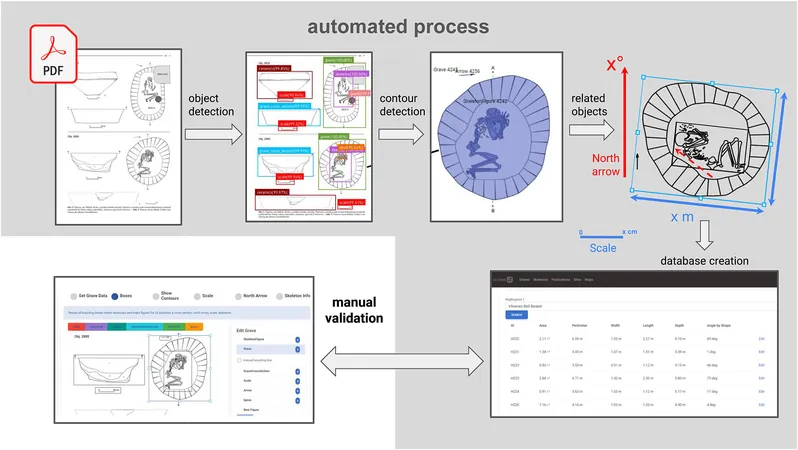
Revolutionizing Archaeology: Meet AutArch, the AI Software Transforming Historical Data Analysis!
2025-06-11
Author: Wei Ling
Imagine accessing 200 years of archaeological research with just a click! Archaeologists often struggle to integrate new discoveries with historical data due to the sheer volume of information. But now, a groundbreaking solution has arrived.
Introducing AutArch: The Game-Changer in Archaeological Research
Developed by innovative researchers at Johannes Gutenberg University Mainz (JGU) alongside international collaborators, AutArch is a user-friendly software leveraging artificial intelligence and big data. Published in the Journal of Archaeological Science, this transformative tool is available as open-source software on platforms like GitHub and Zenodo.
How Does AutArch Work?
At the heart of AutArch lies advanced neural networks designed to identify and analyze archaeological artifacts—ranging from grave images and human remains to pottery and stone tools. This powerful software not only detects data from past collections but can combine them to derive meaningful insights.
Dr. Maxime Brami, the project leader, explains how the software interprets elements like the north arrow and scale in grave drawings, allowing it to calculate the actual dimensions and orientation of burial sites.
A Time Saver for Archaeologists
Gone are the days of painstakingly extracting information from images! Previously, researchers faced hours of tedious work manually resizing and reorienting images to extract data. AutArch automates these processes, enabling archaeologists to generate vast amounts of useful information efficiently.
Accuracy Meets User-Friendliness
Despite being powered by AI, AutArch ensures transparency and accuracy. With its intuitive interface, researchers can easily verify and adjust the data extracted by the software, making it a reliable companion in archaeological studies.
Versatile and Scalable: A Tool for the Future
The versatility of AutArch makes it suitable for a wide range of materials, adapting to the expanding landscape of digital humanities. According to Antoine Muller, a Paleolithic researcher and co-author of the study, the methodology can be applied as long as the object's characteristics have significance.
Dr. Brami emphasizes that this advancement represents a crucial leap forward in utilizing AI for archaeological research, having the potential to revolutionize how scholars access and analyze historical data.
With AutArch, the future of archaeology is brighter than ever, transforming the way we connect with our past!





 Brasil (PT)
Brasil (PT)
 Canada (EN)
Canada (EN)
 Chile (ES)
Chile (ES)
 Česko (CS)
Česko (CS)
 대한민국 (KO)
대한민국 (KO)
 España (ES)
España (ES)
 France (FR)
France (FR)
 Hong Kong (EN)
Hong Kong (EN)
 Italia (IT)
Italia (IT)
 日本 (JA)
日本 (JA)
 Magyarország (HU)
Magyarország (HU)
 Norge (NO)
Norge (NO)
 Polska (PL)
Polska (PL)
 Schweiz (DE)
Schweiz (DE)
 Singapore (EN)
Singapore (EN)
 Sverige (SV)
Sverige (SV)
 Suomi (FI)
Suomi (FI)
 Türkiye (TR)
Türkiye (TR)
 الإمارات العربية المتحدة (AR)
الإمارات العربية المتحدة (AR)